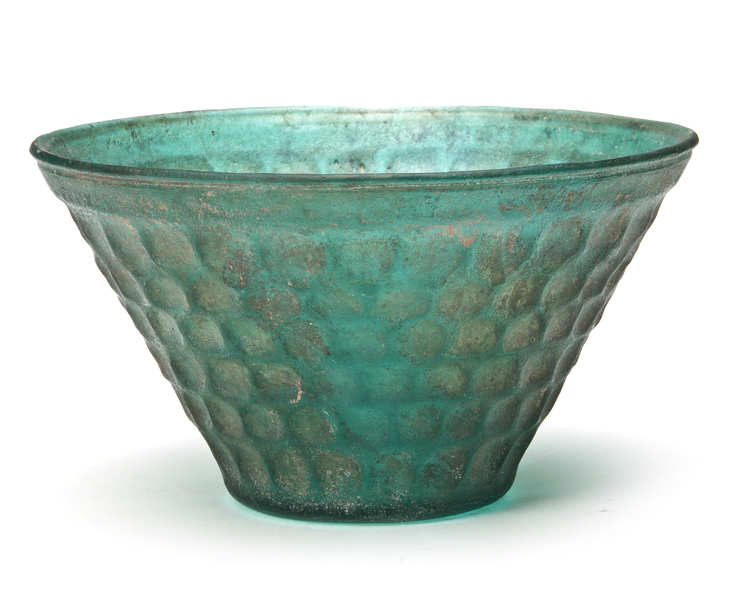A PERSIAN GREEN CUT GLASS BOWL, 8TH-9TH CENTURY
A green glass bowl, decorated with six bands of circular facets forming a honeycomb design, was realized after the object had cooled.
Height: 8 cm.
Diameter: 14.2 cm.
Made in Persia in the first centuries after the Arab conquest, although following a long-established Sassanian technique. In facet-cut vessels from the Sasnian period (224–651), colorless glass was employed, and one shape, the shallow bowl, predominated. Beginning in the Islamic period, Persian glassmakers allowed themselves to be more inventive, and a variety of colored glass, both opaque and transparent, was used, along with a wider variety of shapes, including bottles, jugs, deeper bowls, and vases. This bowl highlights both the continuity of techniques from pre-Islamic to Islamic Persia and the innovations that took place in the Islamic period.
PROVENANCE
Private collection, Germany





